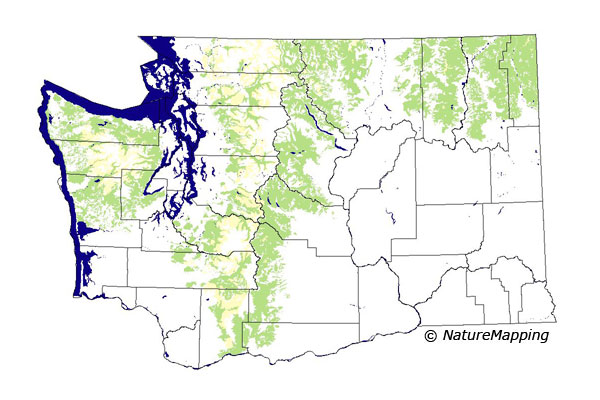
NatureMapping Animal Facts for Kids
Fisher
|
Fisher (Martes pennanti) Local names: Pacific fisher, black cat, fisher cat, pekan, pequam, wejack, and woods-otter. 
What they look like: Fishers are small dark brown mammals - about the size of a house cat. Fishers are similar to the much smaller weasels. They have a long body with short legs, rounded ears, thick coat and a bushy tail. Males are often larger than females. Fishers have five toes with retractable claws - like a cat - making them excellent climbers. 
Where they live: The Fisher is now rare in Washington and limited mostly to dense, mature forests. Click the range map to learn more about the historical distribution of Fishers in Washington. What they eat: Fishers are carnivorous (eat meat) -- they primarily eat mice, porcupines, squirrels, snowshoe hares, birds, and shrews. Like other carnivores, they also feed on fruits and berries, including beechnuts and apples. Behavior: Fishers are secretive and rarely observed in the wild. Young Fishers are raised in dens found in rotting logs or tree cavities (hollow trees). Sometimes females will move their young - several times - if the litter is disturbed by potential predators. Male Fishers do not help raise their young. Fishers communicate with each other by scent marking. They have good senses of hearing, smell, and sight. Reproduction: Very little is known about the mating habitats of Fishers. Female Fishers first breed at one year of age. The breeding season for the Fisher begins in late February and lasts until mid-April. The average number of young in a litter is 3. Young Fishers are born blind and almost completely naked. Their eyes open after about 53 days. They are protected and raised in a hollow tree by their mother. Lifespan/Longevity: Fishers can live up to ten years in the wild.
Did you know?
More information:
Photo Credit: U.S. Fish and Wildlife Service Animal silhouettes available to purchase » |